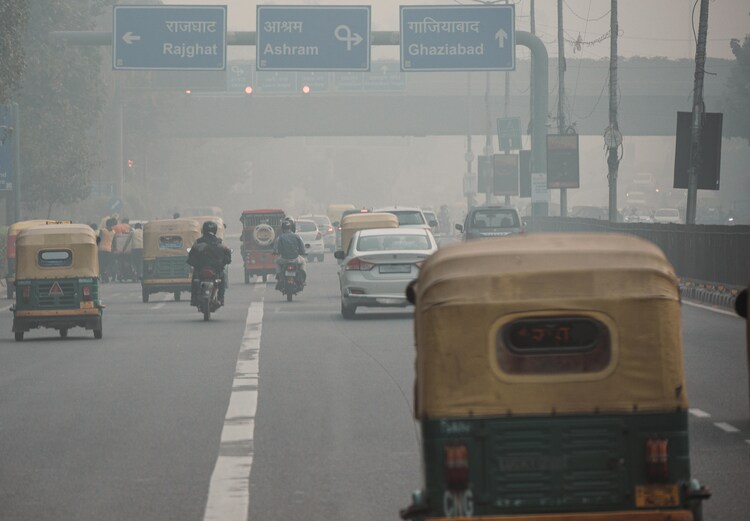PM 2.5 causes 12,000 deaths every year in Delhi: Why is it so deadly?
According to a recent study by Lancet, air pollution causes around 33,000 deaths every year in 10 Indian cities. Delhi tops the list, with 12,000 deaths caused by PM2.5.

A recent Lancet study says that around 33,000 deaths every year in 10 cities in India are caused by air pollution.
Moreover, Delhi tops the list facing the worst effects of particulate matter (PM 2.5), resulting in 12,000 deaths every year.
While the devastating effects of air pollution on health are no surprise, researchers behind the Lancet study found that PM2.5, which consists of particles 2.5 micrometres or less in diameter, can cause respiratory problems, resulting in thousands of premature deaths.
Levels of PM2.5, which are tiny pollutants that can penetrate deep into the lungs and bloodstream, exceeded the World Health Organisation’s safe limit of 15 micrograms per cubic metre on 99.8% of days, according to the study.
Why is PM2.5 so harmful?
Air pollution consists of various elements, such as particulate matter (PM 2.5 and PM 10), ozone, sulfur dioxide, carbon monoxide, lead, ammonia, carbon dioxide, methane, volatile organic compounds and nitrogen dioxide.
Inhaling these elements can cause respiratory problems, cardiovascular diseases and even cancer.
Researchers pointed out that PM 2.5, which is mainly generated from vehicular and industrial emissions, causes maximum deaths. Even short-term exposure to PM 2.5 has harmful effects.
Microscopic particles and droplets present in the air can penetrate deep into the respiratory system.
If this effect persists for a long time, problems like coughing, wheezing, worsening of asthma, bronchitis and decreased lung function arise.

In people who already have cardiovascular problems, exposure to PM2.5 can cause heart attacks, irregular heart rhythms, and increased blood pressure.
When PM2.5 enters the body through breathing over a period of years, lung function can be affected, increasing the risk of cancer.
Children and the elderly are at greater risk due to the development of the respiratory system in children and the weakened immune system in the elderly.
Emerging research has shown how PM2.5 is also causing neurological problems by targeting cognitive health.
The best way to protect yourself is to wear a mask outside and reduce combustion sources of air pollution.
PM2.5 reduces immune function in the lungs
Several studies have looked at how PM2.5 affects alveolar macrophages, which are immune cells in the lungs. When exposed to harmful substances like PM2.5, these cells may not function properly or may die, reducing the body’s ability to fight infection and clear harmful particles from the lungs.

One study collected air particles from six European cities and exposed macrophages from mice to these particles for 24 hours.
They found that high concentrations of PM2.5 significantly reduced the viability of these cells and increased signs of inflammation.
Another study injected microparticles directly into the lungs of mice and found that high concentrations of particles caused severe impairment of macrophage viability.
Another study showed that high levels of PM2.5 reduced the ability of macrophages to engulf harmful particles.
Overall, PM2.5 significantly damages lung immune cells in both laboratory and living animals.
Exposure to PM2.5 increases health costs
According to Lancet researchers, 56% of the global health costs from long-term exposure to fine particulate matter (PM 2.5) come from combustion sources.

These costs come from the burning of coal, liquid fuels, natural gas, solid biofuels, agricultural waste, other fires, and some specific industrial sources.
China had the highest health costs at $447 billion, followed by India at $126 billion and the United States at $67 billion.
Eliminating these sources, such as fossil fuels and biofuels, provides greater health benefits than improving air quality alone.
Most countries will see more significant health benefits from reducing non-combustion emissions than from reducing combustion emissions, even without considering climate benefits.
This highlights the importance of targeting combustion emissions for better health and climate outcomes.







